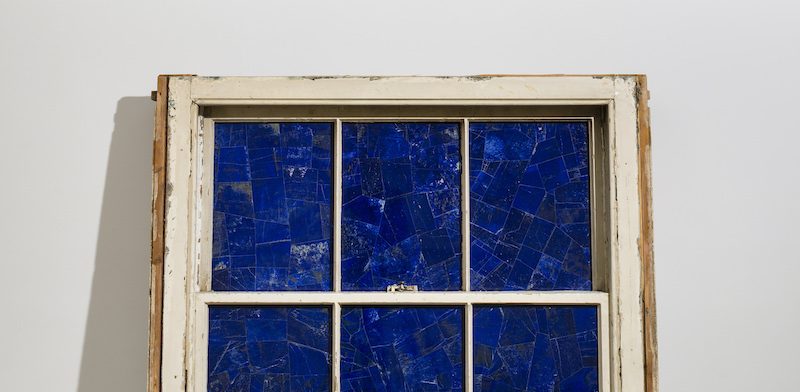An exhibition that reveals as much as it obscures
The protagonist of Vladimir Nabokov’s Transparent Things (1972), a fragment of which serves as ‘script’ for this intricate group show, is Hugh (pronounced ‘you’) Person (pronounced ‘person’). ‘Hullo, person!’, the narrator calls out at the novel’s beginning, but Person can’t hear. Soon after, Person’s discovery of a pencil in a hotel room sets the narrator off on a Proustian journey into the object’s history. The ‘past shines’ through such ‘transparent things’, the narrator explains, before revealing that this pencil was cut from a pine by ‘old Elias Barrowdale’. Which suspiciously godlike deduction might be taken as a hint: the histories of things may be perfectly transparent to the narrator but must remain obscure to persons inside and outside his fiction.
The psychological backstory of the brass ashtray placed on a plinth at the entrance to this exhibition, its edges embossed with ‘DEPRESSIVE’ / ‘ALCOHOLIC’ / ‘MOTHER’, might seem as simple as the pencil to parse. Yet Becky Beasley’s teasingly misspelled title – Astray (D.A.M.) (2018) – suggests that the identities of objects and people are more elusive than is convenient for either art critics or the psychoanalysts whom Nabokov so despised. If the privacy of people and things is violated by the intrusion of narrators into their past, then the inclusion by curator Natasha Hoare of so many blocked windows might be read as reasserting the right to an interior life.
The association of paintings and photographs with windows is parodied by Marie Lund’s Stills (2015), which stretch soiled curtains into tasteful modernist monochromes; David Hammons’s Untitled (Basketball drawing + stone) (2006) mounts a sheet of paper dirtied by bounced basketballs in a gilt frame balanced, precariously, on a rock. The Blue Window (2017) pictured in Lucy Skaer’s photograph is reencountered as a sculpture on the first floor, its four gridded panes bricked up with lightly crazed lapis lazuli. Laid flat like a trapdoor, Skaer’s opaque glass mirrors Hammons’s reorientation of floor as window, to the same exclusionary effect.
The interior of the gallery itself refuses outside scrutiny since Michael Dean has whitewashed its windows as if a shuttered shop, the emulsion applied in cursive ‘f’ shapes like a handwriting exercise. Here, and in two vaguely anthropomorphic concrete obelisks by Dean, language is frustrated. ‘FUCKSAKE’, reads a line of police tape dangling from an outstretched finger, while these figures are crowned by books with butterflies on the covers, splayed open to reveal a stuttering text: ‘…hahaha hahah aha…’. Kerry Tribe’s whirring film installation Parnassius Mnemosyne (2010) also nods to Nabokov’s lepidoptery (it shows magnified images of the eponymous butterfly’s wings) and to the original title – Speak, Mnemosyne – of his 1951 autobiography. That its wings might, like the goddess of memory Mnemosyne, ‘speak’ to novelists and art lovers is little consolation to the butterfly pinned to a board. Its interior life is fatally obscured, not revealed, by its transformation into art.
Indeed, the exhibition is most convincing when it avoids portentous and quasiconfessional gestures (such as Theaster Gates’s Hammond organ – an icon of black popular culture imprisoned inside a minimalist wooden cube, it hums mournfully) to more closely resemble Nabokov’s own sketches of butterfly wings: brilliantly patterned, calculated to the point of cruelty and metaphysically meaningless. Prior to entering the hotel room containing the pencil, Person is told that no one remembers him because everyone is dead (except the narrator, of whose imagination he is a figment). The best work here reminds us that the lives of others are hidden behind a screen, and the past is obscure beyond the boundaries of fiction. The only transparent thing is death, through which nothing shines.
Transparent Things, Goldsmiths Centre for Contemporary Art, London, 21 February – 3 May 2020
From the April 2020 issue of ArtReview
